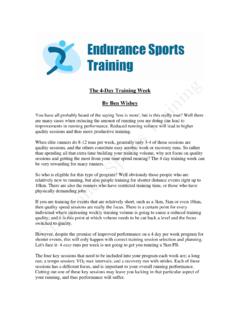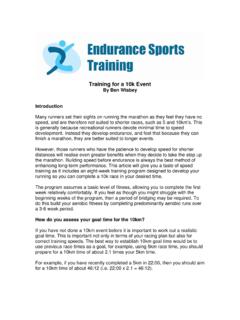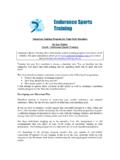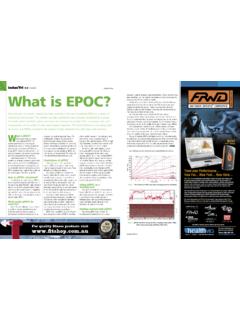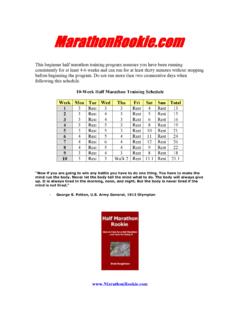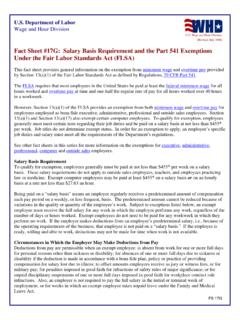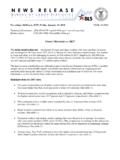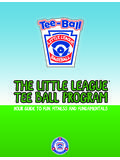Transcription of Half Marathon Training Program - Endurance Sports Training
1 12- week half Marathon Training Program By Ben Wisbey Introduction The half Marathon is often the intermediate goal for those runners looking at doing their first Marathon . It is also the longest distance running event that experienced runner's can compete without interrupting their regular racing and Training Program . For these reasons, and many more, the half Marathon is a very popular event, and one that is often overlooked in regards to its importance in the lead up to a Marathon . While the half Marathon does require significant amounts of strength and Endurance , the real beauty of this distance is that it also has a large speed component. This combination of strength, Endurance and speed, makes for enjoyable Training that can be of benefit to those with a longer term goal of a Marathon or even a 10km. During this article, 2 programs will be outlined. One is for those runners with the main goal of breaking the 100 minute mark, and one for those runners aiming for a time over the 100 minute mark.
2 How do you assess your goal time for a half Marathon ? If you wish to go under the 100 minute mark for your upcoming half Marathon , then as a guide you will need to be capable of running about 22 minutes for 5km or 45 minutes for 10km. Although these are only a guide, if you are not close to these times, then your speed will be a limitation in achieving this half Marathon goal. If you are able to do these or similar times over the shorter distances, then with appropriate strength and Endurance work, you should be capable of breaking 100 minutes for the half . Training for the half Marathon The programs outlined below will highlight the key weekly sessions that need to be completed during your half Marathon preparation. Your weekly Program structure should be build around these sessions. Essential Sessions for the half Marathon Long Aerobic Run (Medium long aerobic run) These longer runs are a key to your half Marathon performance, as they are aimed at providing you with the aerobic development and strength Endurance that is required for the half Marathon .
3 It is best if these runs can be done over slightly undulating terrain, as these rolling hills will allow maximum strength gains. Where possible, it is recommended that you run on softer surfaces just as grass or dirt trails. This will minimise the chance of injury as well as reducing muscular damage and allowing you to back up better between sessions. The intensity of these runs should be moderate as aerobic adaptations are the key. As a guide to pace, about 20-25% slower than half Marathon should be appropriate. For those runners looking at running near the 2 hour mark, then the main challenge will be developing the strength and Endurance to go the distance and therefore long run Training pace may be as fast as half Marathon goal pace. Tempo Intervals Tempo sessions are a key component in Training for the half Marathon . These sessions should be run at about anaerobic threshold intensity, which is equivalent to about 1 hour race pace ( the intensity you could hold for 60 minutes).
4 For this reason, some of the primary adaptations include; boosting anaerobic threshold; improving running economy, and also mentally conditioning yourself to maintain solid intensities for extended periods. Tempo/Strength Session The tempo/strength session is an extension of the straight tempo session, with a greater emphasis on strength Endurance development. This session begins with a tempo period, as described above, and then at the completion of this period immediately moves in some short hill efforts. The first hill effort should begin right at the end of the tempo period, with no recovery between. The intensity of the hill efforts should be equivalent to about 10km race intensity. These efforts should be done on a hill of moderate grade only (5-6%) and during the effort stride length should be slightly longer than normal when hill running. These slightly longer strides will cause more force to be generated in the active muscles and superior strength Endurance gains will result.
5 Between each hill effort, jog slowly back down the hill as recovery, before immediately starting the next effort. Speed Speed sessions are important sessions that are often overlooked in the construction of a Training Program . They provide neuromuscular adaptations, and thus help improve efficiency and technique. These sessions are often also used as a gentle introduction to intense intervals. These sessions should be done on a track or flat smooth oval. The efforts should be run at about 1500m race pace, or a pace that is fast but controlled. If you feel as though you cannot hold your speed or technique for the entire distance of the effort, then you are running too hard. As neuromuscular gains are the focus, you should aim at maintaining speed and technique throughout the session. All efforts should be completed in approximately the same time. In order to allow this, have a full recovery between each effort.
6 This will generally means 2 to 3 minutes of easy jogging. While the intensity of these efforts is quite high, their short duration with the long recovery between intervals makes them relatively low stress. VO2 These sessions are you key 'top end' intensity sessions and will definitely be the harder sessions you will complete in regards to running intensity. The aim of these sessions is to provide improvements in VO2 max, sustainable running speed, as well as some improvements in anaerobic threshold. The efforts should be completed on a track or flat grass oval. Efforts should be done at 5km race pace for those runners aiming for a sub 100min half Marathon , while those aiming for over 100 minutes should aim to complete these efforts at about 3km race pace. Each effort should be of a consistent pace, with no surging. The recovery between each effort is relatively short and is specified in the Training Program below.
7 This recovery period does not allow for full recovery. This is the session that many runners get carried away with and try and push too hard. If these efforts are pushed too hard, then the appropriate adaptations will not occur. The focus of the session will become lactate tolerance, and recovery afterwards will be much slower. Missing out on these key adaptations at the desired intensities would result in inferior half Marathon performance, so be sure not to push these intervals too hard. Recovery If you are able to fit in additional weekly runs, they should be made up of easy recovery runs. These runs are aimed at providing you with some additional aerobic benefits on top of your usual Training load, but more importantly are used as active recovery between the key weekly sessions. These runs should be of very low intensity- an intensity that is simply an easy jog. There should be no stress associated with these runs and you should generally finish the run feeling better than when you began.
8 Preparing for Your Training sessions The preparation for each of your Training sessions is in many ways as important as the session itself. Inadequate preparation will result in poor Training intensity and therefore Training session goals will not be achieved. Nutrition and hydration are important so be sure to eat and drink before all key Training sessions, and especially for the morning sessions. The other key aspect of session preparation is the warm-up. A warm-up should consist of a minimum of 10 minutes of light activity. For more intense sessions this warm-up should be even longer and it is recommended that a total of 15 minutes be completed. The recommended warm-up begins with 5-8 minutes of easy jogging. Then complete some low intensity drills in order to take your muscles through an increased range of motion. Some appropriate drills include high knees and butt kicks, as well as many other running specific drills.
9 The next part of the warm-up process is used to provide a little bit of intensity to 'kick over' your anaerobic energy system, as well as increasing the length of your stride to finish off your muscular warm-up. These surges should only be 10-25 seconds in length and done at around 5km race intensity. Shorter surges should be fine for your aerobic or less intense runs, but for your key intensity sessions, longer intervals will provide a better warm-up for the energy system demands of the oncoming session. Your last surges should finish about 2 minute before you start the main part of your session. Static stretching should be avoided as part of the warm-up as this may allow the muscles to cool down, as well as restricting the speed and power of muscular contractions. Many people have traditionally used static stretching as part of their warm-up, so if it makes you feel more comfortable, include only a short 2-3 minute period of stretching prior to starting the drills and strides portion of the warm-up.
10 Training Speeds Pace for half Marathon Training Notes Long Aerobic Run 20% slower than Marathon goal pace. Moderate, should be neither hard nor easy. Run solid and strong. Speed Intervals (on track) ~1500m race pace Not a maximal sprint, maintain control and technique. VO2 Intervals (on track) 5km race pace A very hard session but each effort should be at an even pace and not run faster than 5km race pace. Tempo 60min race intensity Can be completed over a hilly circuit. Intensity should be firm but sustainable. Strength Efforts (hill efforts) Approx. 10km race intensity On a hill of moderate grade, and stride length should not be shortened too much for the hill. The 12- week Training Program for your half Marathon Sub 100min half Marathon Training Program week Number Long Aerobic Tempo/StrengthSpeed VO2 Medium Long Aerobic week 1 80 min 4x4min with 3min rec. 4x200m - 30min recovery week 2 95 min 4x5min with 2min rec.
